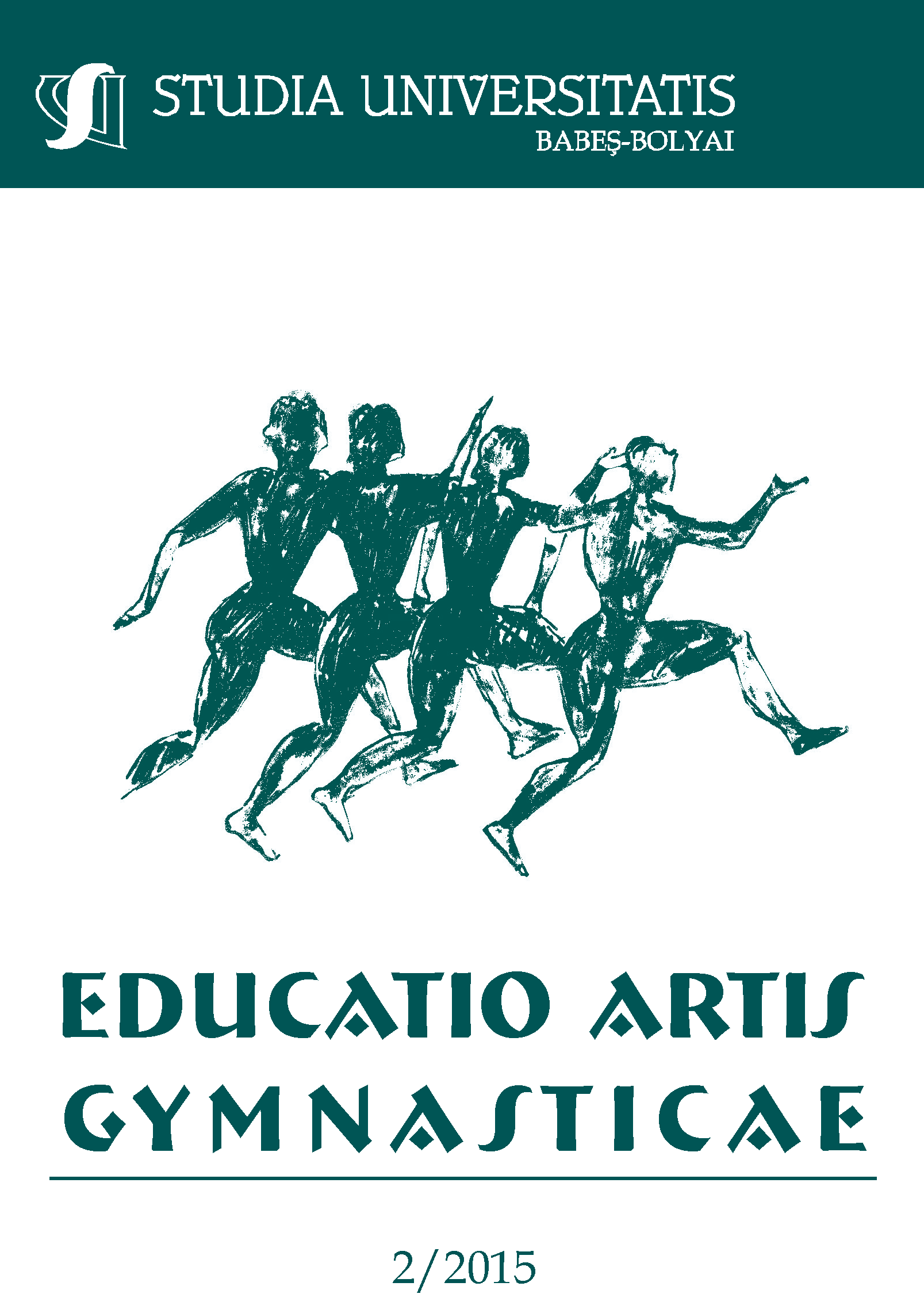ASSESSMENT THE CAPACITY OF WORKING MEMORY BY COMPLEX MOTOR TASK IN 10-14 YEARS OLD CHILDREN
Keywords:
memory, working memory, capacity of working memory, school age, complex motor taskAbstract
The aim of the present study is to examine motor learning by capacity of working memory, focusing on kinesthetic, visuospatial sketchpad in nonclinical sample of school-aged children with complex motor task. Several researches are examining the capacity of working memory but there is very little study with nonclinical sample using complex motor task in test. The information obtained was intended to provide normative data before studying clinical populations. It can be declared that by quality the retrieval from the LTM is more auspicious than the retrieval form working memory even if the items are in the process of transcription/encoding. The information gathered in working memory did not find enough connections with movement patterns that were previously stored in the LTM, so the retrieval of them was slower and more imprecise. We can state that at the retrieval/reproduction of a maximum 30 seconds long complex set of movements the last items are still in working memory. In case of complex sport movements (as our exercises also were), the recall of the beginning of a set of movements the 30 seconds seemed short time for accessing/ encoding the data to LTM.References
Atkinson, R.C. & R.M. Shiffrin. (1968). Human memory: A proposed system and its control processes. In The psychology of learning and motivation: Advances in research and theory, vol. 2. (ed. K.W. Spence), pp. 89-195. Academic Press, New York.
Atkinson, R.C., Hilgard, Smith, E.E, & Nolen, H (2005). Pszichológia. (in Hun) (Psychology) Osiris Press. Budapest. Hungary.
Baddeley, A.D. (1992). Working memory. Science 255: 556-559.
Baddeley, A.D. (1996). The fractionation of working memory. Proc. Natl. Acad. Sci. 93: 13468-13472.
Baddeley, A. (2001). Az emberi emlékezet (in Hun). (Human Memory) Osiris Press. Budapest. Hungary.
Baddeley, A.D., & Hitch, G.J. (1974). Working Memory. In: Bower, G. (ed.), Recent Advances in Learning and Motivation (pp. 47-90) Vol. VIII. New York: Academic Press.
Bourgeois, J.P., P.S. Goldman-Rakic, & P. Rakic. (1994). Synaptogenesis in the prefrontal cortex of rhesus monkeys. Cerebral Cortex 4: 78-96.
Bunge, S.A., N.M. Dudukovic, M.E. Thomason, C.J. Vaidya, & J.D. Gabrieli. (2002). Immature frontal lobe contributions to cognitive control in children: Evidence from fMRI. Neuron 33: 301-311. Carpenter P.A., Miyake A., Just M.A., (1994). Working memory constraints in comprehension. In Gernsbacher, M.A. (Ed.), Handbook of psycholinguistic (pp. 1075-1122 Academic Press, INC. San Diego, California.
Casey, B.J., J.D. Cohen, P. Jezzard, R. Turner, D.C. Noll, R.J. Trainor, J. Giedd, D. Kaysen, L. Hertz-Pannier, & J.L. Rapoport. (1995). Activation of prefrontal cortex in children during a nonspatial working memory task with functional MRI. NeuroImage 2: 221-229.
Casey, B.J., J.N. Giedd, & K.M. Thomas. (2000). Structural and functional brain development and its relation to cognitive development. Biol. Psychol. 54: 241-257.
Craik, F.I.M., J.M. Gardiner, & M.J. Watkins. (1970). Further evidence for a negative recency effect in free recall. J. Verbal Learning and Verbal Behavior 9: 554-560.
Daneman, M. & Carpenter, P. (1980). Individual differences in working memory and reading. Journal of Verbal Learning Verbal Behavior. 19, 450-466.
Ebbinghaus, H. (1885). Über das Gedächtnis. New York: Dover.
Engle, R.W., Kane, M.J., & Tuholski, S.W. (1999). Individual Differences in Working Memory Capacity and What They Tell Us About Controlled Attention, General Fluid Intelligence, and Functions of the Prefrontal Cortex. In Miyake, A. and Priti, S. (Eds.). Models of working memory: Mechanisms of Active Maintenance and Executive Control (pp. 102-135). Cambridge: Cambridge University Press.
Ericsson, K. A. & Kintsch, W. (1995). Long-term working memory. Psychological Review, 102, 211-245.
Fernández, T., T. Harmony, J. Silva, L. Galán, L. Diaz-Comas, J. Bosch, M. Rodriguez, A. Fernández-Bouzas, G. Yáñez, G. Otero (1998). Relationship of specific EEG frequencies at specific brain areas with performance. NeuroReport 9: 3681-3687.
Funahashi, S. & Kubota, K. (1994). Working memory and prefrontal cortex. Neurosci. Res. 21: 1-11.
Fuster, J.M. (1989). The prefrontal cortex. Raven Press, New York.
Fügedi, B. Bognár, J. Honfi, L., Munkácsi, I. Tóth, L. Kovács T.L. (2006). Retention of continuous exercise movement series with various teaching methods, Journal of the Coimbra Network of Sport and Exercise Sciences, 3(1), 35-42.
Downloads
Published
How to Cite
Issue
Section
License
Copyright (c) 2015 Studia Universitatis Babeș-Bolyai Educatio Artis Gymnasticae

This work is licensed under a Creative Commons Attribution-NonCommercial-NoDerivatives 4.0 International License.



